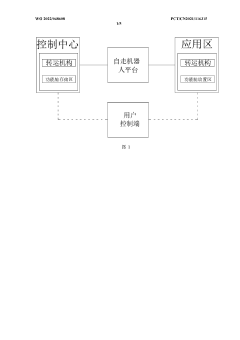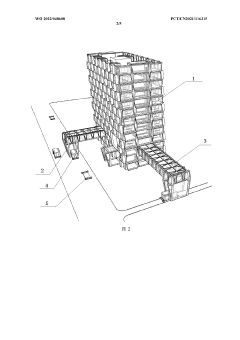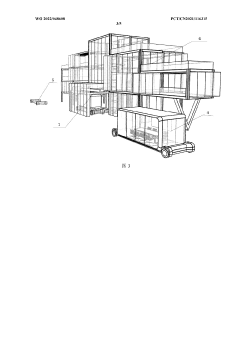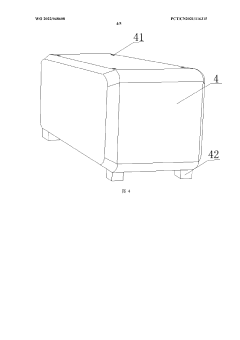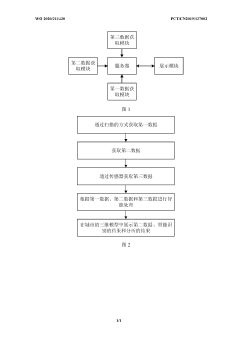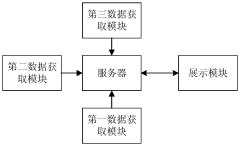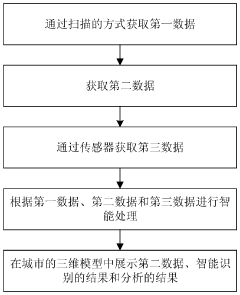Phospholipid Utilization for Smart City Development
JUL 16, 20259 MIN READ
Generate Your Research Report Instantly with AI Agent
Patsnap Eureka helps you evaluate technical feasibility & market potential.
Phospholipid Tech in Smart Cities: Background and Objectives
Phospholipids, traditionally associated with biological membranes and cellular functions, are emerging as a promising technology for smart city development. This innovative approach leverages the unique properties of phospholipids to address various urban challenges and enhance sustainability. The evolution of phospholipid technology in urban contexts stems from advancements in nanotechnology, biomimetics, and materials science.
The primary objective of this research is to explore and evaluate the potential applications of phospholipid-based technologies in smart city infrastructure and systems. By harnessing the self-assembling, responsive, and biocompatible nature of phospholipids, researchers aim to develop novel solutions for energy efficiency, water treatment, air purification, and sustainable construction materials.
One of the key drivers behind this technological exploration is the growing need for environmentally friendly and resource-efficient urban development. As cities face increasing pressures from population growth, climate change, and resource scarcity, phospholipid technology offers a promising avenue for creating adaptive and resilient urban environments.
The historical context of phospholipid research in biology and medicine provides a strong foundation for its application in urban settings. Recent breakthroughs in manipulating phospholipid structures at the nanoscale have opened up new possibilities for their use in non-biological contexts, particularly in smart materials and sensing technologies.
Current trends in phospholipid technology for smart cities focus on several key areas. These include the development of self-healing building materials inspired by cell membrane repair mechanisms, the creation of biomimetic water filtration systems based on phospholipid membranes, and the design of energy-efficient lighting and display technologies utilizing phospholipid-based organic light-emitting diodes (OLEDs).
The integration of phospholipid technology into smart city development aligns with broader goals of sustainability, resilience, and improved quality of life for urban residents. By mimicking natural processes and structures, these technologies have the potential to create more adaptive and responsive urban systems that can efficiently manage resources and respond to environmental changes.
As research in this field progresses, the ultimate goal is to develop a suite of phospholipid-based technologies that can be seamlessly integrated into urban infrastructure, contributing to the creation of smarter, more sustainable cities. This interdisciplinary approach combines insights from biology, materials science, and urban planning to address complex urban challenges in innovative ways.
The primary objective of this research is to explore and evaluate the potential applications of phospholipid-based technologies in smart city infrastructure and systems. By harnessing the self-assembling, responsive, and biocompatible nature of phospholipids, researchers aim to develop novel solutions for energy efficiency, water treatment, air purification, and sustainable construction materials.
One of the key drivers behind this technological exploration is the growing need for environmentally friendly and resource-efficient urban development. As cities face increasing pressures from population growth, climate change, and resource scarcity, phospholipid technology offers a promising avenue for creating adaptive and resilient urban environments.
The historical context of phospholipid research in biology and medicine provides a strong foundation for its application in urban settings. Recent breakthroughs in manipulating phospholipid structures at the nanoscale have opened up new possibilities for their use in non-biological contexts, particularly in smart materials and sensing technologies.
Current trends in phospholipid technology for smart cities focus on several key areas. These include the development of self-healing building materials inspired by cell membrane repair mechanisms, the creation of biomimetic water filtration systems based on phospholipid membranes, and the design of energy-efficient lighting and display technologies utilizing phospholipid-based organic light-emitting diodes (OLEDs).
The integration of phospholipid technology into smart city development aligns with broader goals of sustainability, resilience, and improved quality of life for urban residents. By mimicking natural processes and structures, these technologies have the potential to create more adaptive and responsive urban systems that can efficiently manage resources and respond to environmental changes.
As research in this field progresses, the ultimate goal is to develop a suite of phospholipid-based technologies that can be seamlessly integrated into urban infrastructure, contributing to the creation of smarter, more sustainable cities. This interdisciplinary approach combines insights from biology, materials science, and urban planning to address complex urban challenges in innovative ways.
Market Analysis for Phospholipid-Based Urban Solutions
The phospholipid-based urban solutions market is experiencing significant growth, driven by the increasing demand for sustainable and eco-friendly technologies in smart city development. As cities worldwide strive to become more efficient, resilient, and environmentally conscious, the potential applications of phospholipids in urban infrastructure and systems are gaining attention from both public and private sectors.
The global smart city market is projected to reach $2.5 trillion by 2025, with a compound annual growth rate (CAGR) of 18.9% from 2020 to 2025. Within this broader market, the phospholipid-based solutions segment is expected to grow at an even faster rate, driven by its unique properties and versatile applications in urban environments.
One of the key drivers of market demand is the growing emphasis on sustainable urban development. Phospholipids, being biodegradable and derived from renewable sources, align well with the sustainability goals of many cities. This has led to increased interest in phospholipid-based materials for construction, water treatment, and energy storage applications.
In the construction sector, phospholipid-based coatings and materials are gaining traction due to their self-healing properties and ability to enhance the durability of infrastructure. The global construction chemicals market, which includes such advanced materials, is expected to reach $50 billion by 2024, with phospholipid-based products capturing an increasing share.
Water treatment is another significant area of application for phospholipid-based solutions in smart cities. With growing concerns over water scarcity and quality, there is a rising demand for efficient and environmentally friendly water purification technologies. The global water treatment chemicals market is projected to reach $56 billion by 2025, with phospholipid-based flocculants and membranes expected to play a crucial role in this growth.
Energy storage is yet another promising area for phospholipid utilization in smart cities. As urban areas transition towards renewable energy sources, there is a growing need for advanced energy storage solutions. Phospholipid-based materials are being explored for their potential in developing high-performance batteries and supercapacitors, which could revolutionize urban energy management.
The market for phospholipid-based urban solutions is characterized by intense research and development activities, with both established companies and startups investing heavily in innovation. This has led to a steady stream of patents and product launches, further fueling market growth and competition.
Geographically, North America and Europe are currently the leading markets for phospholipid-based urban solutions, owing to their advanced smart city initiatives and strong focus on sustainability. However, the Asia-Pacific region is expected to witness the fastest growth in the coming years, driven by rapid urbanization and increasing government investments in smart city projects.
The global smart city market is projected to reach $2.5 trillion by 2025, with a compound annual growth rate (CAGR) of 18.9% from 2020 to 2025. Within this broader market, the phospholipid-based solutions segment is expected to grow at an even faster rate, driven by its unique properties and versatile applications in urban environments.
One of the key drivers of market demand is the growing emphasis on sustainable urban development. Phospholipids, being biodegradable and derived from renewable sources, align well with the sustainability goals of many cities. This has led to increased interest in phospholipid-based materials for construction, water treatment, and energy storage applications.
In the construction sector, phospholipid-based coatings and materials are gaining traction due to their self-healing properties and ability to enhance the durability of infrastructure. The global construction chemicals market, which includes such advanced materials, is expected to reach $50 billion by 2024, with phospholipid-based products capturing an increasing share.
Water treatment is another significant area of application for phospholipid-based solutions in smart cities. With growing concerns over water scarcity and quality, there is a rising demand for efficient and environmentally friendly water purification technologies. The global water treatment chemicals market is projected to reach $56 billion by 2025, with phospholipid-based flocculants and membranes expected to play a crucial role in this growth.
Energy storage is yet another promising area for phospholipid utilization in smart cities. As urban areas transition towards renewable energy sources, there is a growing need for advanced energy storage solutions. Phospholipid-based materials are being explored for their potential in developing high-performance batteries and supercapacitors, which could revolutionize urban energy management.
The market for phospholipid-based urban solutions is characterized by intense research and development activities, with both established companies and startups investing heavily in innovation. This has led to a steady stream of patents and product launches, further fueling market growth and competition.
Geographically, North America and Europe are currently the leading markets for phospholipid-based urban solutions, owing to their advanced smart city initiatives and strong focus on sustainability. However, the Asia-Pacific region is expected to witness the fastest growth in the coming years, driven by rapid urbanization and increasing government investments in smart city projects.
Current Challenges in Phospholipid Applications for Urban Development
The integration of phospholipids into smart city development faces several significant challenges that hinder their widespread application. One of the primary obstacles is the lack of standardized protocols for incorporating phospholipid-based technologies into urban infrastructure. This absence of standardization makes it difficult for city planners and developers to implement these solutions consistently across different projects and municipalities.
Another major challenge is the high cost associated with phospholipid-based technologies. The production and implementation of these advanced materials often require substantial financial investments, which can be prohibitive for many cities, especially those with limited budgets. This cost factor significantly slows down the adoption rate and limits the scale at which phospholipid solutions can be deployed in urban environments.
The durability and long-term stability of phospholipid applications in diverse urban conditions pose another significant hurdle. Cities are exposed to various environmental stresses, including temperature fluctuations, humidity, pollution, and mechanical wear. Ensuring that phospholipid-based materials can withstand these conditions over extended periods without degradation or loss of functionality remains a critical challenge for researchers and engineers.
Furthermore, there is a notable knowledge gap among urban planners, architects, and policymakers regarding the potential benefits and applications of phospholipids in smart city development. This lack of awareness and understanding often leads to hesitation in adopting these innovative solutions, even when they could provide substantial improvements to urban infrastructure and services.
The integration of phospholipid technologies with existing urban systems and infrastructure presents another set of challenges. Many cities have legacy systems that are not easily compatible with new, phospholipid-based solutions. Retrofitting or replacing these systems to accommodate phospholipid technologies can be complex, time-consuming, and expensive.
Additionally, there are regulatory and safety concerns surrounding the use of phospholipids in urban environments. The novelty of these applications means that many regulatory frameworks are not yet equipped to assess and approve their use in public spaces. This regulatory uncertainty can lead to delays in implementation and hesitation from city officials to adopt these technologies.
Lastly, the scalability of phospholipid applications from laboratory settings to large-scale urban deployments remains a significant challenge. Many promising phospholipid-based solutions have shown potential in controlled environments, but translating these successes to the complex and dynamic urban landscape requires overcoming numerous technical and logistical hurdles.
Another major challenge is the high cost associated with phospholipid-based technologies. The production and implementation of these advanced materials often require substantial financial investments, which can be prohibitive for many cities, especially those with limited budgets. This cost factor significantly slows down the adoption rate and limits the scale at which phospholipid solutions can be deployed in urban environments.
The durability and long-term stability of phospholipid applications in diverse urban conditions pose another significant hurdle. Cities are exposed to various environmental stresses, including temperature fluctuations, humidity, pollution, and mechanical wear. Ensuring that phospholipid-based materials can withstand these conditions over extended periods without degradation or loss of functionality remains a critical challenge for researchers and engineers.
Furthermore, there is a notable knowledge gap among urban planners, architects, and policymakers regarding the potential benefits and applications of phospholipids in smart city development. This lack of awareness and understanding often leads to hesitation in adopting these innovative solutions, even when they could provide substantial improvements to urban infrastructure and services.
The integration of phospholipid technologies with existing urban systems and infrastructure presents another set of challenges. Many cities have legacy systems that are not easily compatible with new, phospholipid-based solutions. Retrofitting or replacing these systems to accommodate phospholipid technologies can be complex, time-consuming, and expensive.
Additionally, there are regulatory and safety concerns surrounding the use of phospholipids in urban environments. The novelty of these applications means that many regulatory frameworks are not yet equipped to assess and approve their use in public spaces. This regulatory uncertainty can lead to delays in implementation and hesitation from city officials to adopt these technologies.
Lastly, the scalability of phospholipid applications from laboratory settings to large-scale urban deployments remains a significant challenge. Many promising phospholipid-based solutions have shown potential in controlled environments, but translating these successes to the complex and dynamic urban landscape requires overcoming numerous technical and logistical hurdles.
Existing Phospholipid Utilization Strategies in Urban Settings
01 Phospholipid synthesis and modification
Various methods for synthesizing and modifying phospholipids are described, including enzymatic processes and chemical reactions. These techniques aim to produce phospholipids with specific properties or structures for use in pharmaceuticals, cosmetics, and other industries.- Phospholipid synthesis and extraction methods: Various methods for synthesizing and extracting phospholipids from natural sources or through chemical processes. These techniques aim to produce high-quality phospholipids for use in pharmaceuticals, cosmetics, and food industries.
- Phospholipid-based drug delivery systems: Development of phospholipid-based formulations for improved drug delivery. These systems enhance drug solubility, stability, and bioavailability, potentially leading to more effective treatments for various diseases.
- Analytical methods for phospholipid characterization: Advanced analytical techniques for identifying, quantifying, and characterizing phospholipids in complex mixtures. These methods are crucial for quality control and research in pharmaceutical and biotechnology industries.
- Phospholipid applications in food and nutrition: Utilization of phospholipids in food products and nutritional supplements. These applications focus on improving food texture, stability, and nutritional value, as well as developing functional foods with health benefits.
- Phospholipid-based materials for medical devices: Development of phospholipid-based materials for use in medical devices and implants. These materials aim to improve biocompatibility, reduce inflammation, and enhance the performance of various medical devices.
02 Phospholipid-based drug delivery systems
Phospholipids are utilized in the development of drug delivery systems, such as liposomes and nanoparticles. These systems enhance drug solubility, stability, and targeted delivery, improving therapeutic efficacy and reducing side effects.Expand Specific Solutions03 Phospholipid analysis and characterization
Advanced analytical techniques are employed to characterize phospholipids, including mass spectrometry, chromatography, and spectroscopic methods. These techniques allow for the identification, quantification, and structural elucidation of phospholipids in various biological and synthetic samples.Expand Specific Solutions04 Phospholipid applications in food and nutrition
Phospholipids are used in food and nutritional products for their emulsifying properties and potential health benefits. They are incorporated into functional foods, dietary supplements, and infant formulas to improve texture, stability, and nutritional value.Expand Specific Solutions05 Phospholipid-based membrane models and biosensors
Artificial phospholipid membranes are developed as models for studying cellular processes and as platforms for biosensors. These systems mimic natural cell membranes and can be used to investigate membrane-protein interactions, drug permeability, and other biological phenomena.Expand Specific Solutions
Key Players in Phospholipid-Enabled Smart City Solutions
The research on phospholipid utilization for smart city development is in its early stages, with a growing market potential as cities worldwide seek sustainable solutions. The technology's maturity is still evolving, with various players contributing to its advancement. Academic institutions like Zhejiang University and Shandong Normal University are conducting foundational research, while companies such as Avanti Polar Lipids and Lipogen Ltd. are developing commercial applications. The involvement of diverse entities, including pharmaceutical companies like Asahi Kasei Pharma and research-focused organizations like The Scripps Research Institute, indicates a multidisciplinary approach to exploring phospholipid applications in urban environments.
Zhejiang University
Technical Solution: Zhejiang University has developed a novel phospholipid-based smart material for urban water treatment. This material utilizes a phospholipid bilayer structure to create a responsive membrane that can selectively filter out contaminants from water sources. The membrane's permeability can be controlled by external stimuli such as pH, temperature, or electric fields, allowing for adaptive filtration in various urban water management scenarios[1]. The university has also integrated this technology with IoT sensors for real-time monitoring and adjustment of water quality in smart city infrastructure[3].
Strengths: Highly adaptive and responsive water treatment solution, integration with smart city systems. Weaknesses: May require complex implementation and maintenance in large-scale urban environments.
Avanti Polar Lipids LLC
Technical Solution: Avanti Polar Lipids has developed a range of specialized phospholipid formulations for smart city applications, focusing on environmental sensing and remediation. Their proprietary lipid nanoparticles are designed to encapsulate and deliver active compounds for soil and water decontamination in urban areas[2]. These nanoparticles can be programmed to release their payload under specific environmental conditions, allowing for targeted and efficient remediation efforts. Additionally, Avanti has created phospholipid-based biosensors that can be integrated into smart city monitoring systems to detect pollutants and pathogens in real-time[4].
Strengths: Highly specialized phospholipid products, versatile applications in environmental management. Weaknesses: May have higher production costs compared to traditional remediation methods.
Core Innovations in Phospholipid-Based Urban Technologies
Smart city life service system and use method therefor
PatentWO2022048608A1
Innovation
- Modular functional cabins that can be transferred between control center and application areas to optimize space utilization.
- Integration of self-propelled robot platforms for automated delivery and placement of functional modules.
- User-controlled system accessible via mobile devices for on-demand service requests and module selection.
Smart city system and implementation method therefor
PatentWO2020211430A1
Innovation
- By acquiring the city's three-dimensional data, live video streams and sensor data, we generate a three-dimensional model and overlay the video streams, perform point cloud segmentation and intelligent recognition, realize the identification and quantity statistics of objects in the city model, and display them through somatosensory and other methods. control.
Environmental Impact of Phospholipid Technologies in Urban Areas
The integration of phospholipid technologies in urban environments presents both opportunities and challenges for smart city development. As these technologies are increasingly adopted, their environmental impact becomes a critical consideration for urban planners and policymakers.
Phospholipid-based materials and systems have the potential to significantly reduce energy consumption in buildings through their application in smart windows and thermal management solutions. These technologies can dynamically adjust to environmental conditions, optimizing heating and cooling requirements. Consequently, this leads to a decrease in greenhouse gas emissions associated with urban energy use.
However, the production and disposal of phospholipid-based products may have environmental implications. The manufacturing process often involves chemical synthesis, which can generate waste and consume resources. Urban areas must develop robust recycling and waste management systems to handle these materials effectively at the end of their lifecycle.
In water management, phospholipid technologies offer promising solutions for urban water treatment and purification. Advanced filtration systems utilizing phospholipid membranes can remove contaminants more efficiently than traditional methods, potentially reducing the environmental footprint of water treatment facilities in cities.
The use of phospholipid-based biosensors for environmental monitoring in urban areas can lead to more precise detection of pollutants and harmful substances. This enhanced monitoring capability allows for quicker responses to environmental threats, potentially mitigating long-term ecological damage in urban ecosystems.
Urban agriculture and green spaces may benefit from phospholipid technologies through improved nutrient delivery systems and plant growth enhancers. These applications could increase the efficiency of urban farming initiatives, contributing to local food production and reducing the carbon footprint associated with food transportation.
Nevertheless, the potential accumulation of phospholipid-based materials in urban environments raises concerns about their long-term effects on soil and water systems. Research is needed to fully understand the biodegradability and potential bioaccumulation of these compounds in urban ecosystems.
As smart cities increasingly adopt phospholipid technologies, it is crucial to implement comprehensive life cycle assessments to evaluate their overall environmental impact. This approach will help identify areas for improvement and ensure that the benefits of these technologies outweigh any potential environmental costs in urban settings.
Phospholipid-based materials and systems have the potential to significantly reduce energy consumption in buildings through their application in smart windows and thermal management solutions. These technologies can dynamically adjust to environmental conditions, optimizing heating and cooling requirements. Consequently, this leads to a decrease in greenhouse gas emissions associated with urban energy use.
However, the production and disposal of phospholipid-based products may have environmental implications. The manufacturing process often involves chemical synthesis, which can generate waste and consume resources. Urban areas must develop robust recycling and waste management systems to handle these materials effectively at the end of their lifecycle.
In water management, phospholipid technologies offer promising solutions for urban water treatment and purification. Advanced filtration systems utilizing phospholipid membranes can remove contaminants more efficiently than traditional methods, potentially reducing the environmental footprint of water treatment facilities in cities.
The use of phospholipid-based biosensors for environmental monitoring in urban areas can lead to more precise detection of pollutants and harmful substances. This enhanced monitoring capability allows for quicker responses to environmental threats, potentially mitigating long-term ecological damage in urban ecosystems.
Urban agriculture and green spaces may benefit from phospholipid technologies through improved nutrient delivery systems and plant growth enhancers. These applications could increase the efficiency of urban farming initiatives, contributing to local food production and reducing the carbon footprint associated with food transportation.
Nevertheless, the potential accumulation of phospholipid-based materials in urban environments raises concerns about their long-term effects on soil and water systems. Research is needed to fully understand the biodegradability and potential bioaccumulation of these compounds in urban ecosystems.
As smart cities increasingly adopt phospholipid technologies, it is crucial to implement comprehensive life cycle assessments to evaluate their overall environmental impact. This approach will help identify areas for improvement and ensure that the benefits of these technologies outweigh any potential environmental costs in urban settings.
Regulatory Framework for Phospholipid Use in Urban Development
The regulatory framework for phospholipid use in urban development is a critical aspect of smart city initiatives that leverage this innovative technology. As cities explore the potential of phospholipids in various applications, it is essential to establish a comprehensive set of regulations to ensure safe, efficient, and sustainable implementation.
At the federal level, regulatory bodies such as the Environmental Protection Agency (EPA) and the Department of Energy (DOE) play crucial roles in overseeing the use of phospholipids in urban environments. These agencies are responsible for setting standards and guidelines for the production, handling, and disposal of phospholipid-based materials. They also monitor potential environmental impacts and enforce compliance with existing regulations.
State and local governments have the authority to implement more stringent regulations tailored to their specific urban contexts. These may include zoning laws that dictate where phospholipid-based technologies can be deployed, building codes that incorporate phospholipid-enhanced materials, and permitting processes for projects utilizing this technology.
One key area of regulation focuses on the safety and health implications of phospholipid use in urban settings. This includes establishing exposure limits for workers and residents, as well as protocols for handling and storing phospholipid-based materials. Additionally, regulations may address potential environmental concerns, such as the impact on local ecosystems and water systems.
The regulatory framework also encompasses standards for quality control and performance of phospholipid-based products and applications. This ensures that the technology meets specific benchmarks for efficiency, durability, and effectiveness in various urban development contexts. Certification programs may be developed to verify compliance with these standards.
As the technology evolves, regulatory bodies must remain adaptable and responsive to new developments. This may involve regular reviews and updates to existing regulations, as well as the creation of new guidelines to address emerging applications of phospholipids in smart city development.
Collaboration between regulatory agencies, research institutions, and industry stakeholders is crucial for developing effective and balanced regulations. This partnership approach helps ensure that regulations are based on the latest scientific knowledge and practical considerations while promoting innovation and economic growth.
International cooperation and harmonization of regulations are also important aspects of the regulatory framework. As smart city technologies become increasingly global, aligning standards and practices across borders can facilitate the adoption and implementation of phospholipid-based solutions worldwide.
At the federal level, regulatory bodies such as the Environmental Protection Agency (EPA) and the Department of Energy (DOE) play crucial roles in overseeing the use of phospholipids in urban environments. These agencies are responsible for setting standards and guidelines for the production, handling, and disposal of phospholipid-based materials. They also monitor potential environmental impacts and enforce compliance with existing regulations.
State and local governments have the authority to implement more stringent regulations tailored to their specific urban contexts. These may include zoning laws that dictate where phospholipid-based technologies can be deployed, building codes that incorporate phospholipid-enhanced materials, and permitting processes for projects utilizing this technology.
One key area of regulation focuses on the safety and health implications of phospholipid use in urban settings. This includes establishing exposure limits for workers and residents, as well as protocols for handling and storing phospholipid-based materials. Additionally, regulations may address potential environmental concerns, such as the impact on local ecosystems and water systems.
The regulatory framework also encompasses standards for quality control and performance of phospholipid-based products and applications. This ensures that the technology meets specific benchmarks for efficiency, durability, and effectiveness in various urban development contexts. Certification programs may be developed to verify compliance with these standards.
As the technology evolves, regulatory bodies must remain adaptable and responsive to new developments. This may involve regular reviews and updates to existing regulations, as well as the creation of new guidelines to address emerging applications of phospholipids in smart city development.
Collaboration between regulatory agencies, research institutions, and industry stakeholders is crucial for developing effective and balanced regulations. This partnership approach helps ensure that regulations are based on the latest scientific knowledge and practical considerations while promoting innovation and economic growth.
International cooperation and harmonization of regulations are also important aspects of the regulatory framework. As smart city technologies become increasingly global, aligning standards and practices across borders can facilitate the adoption and implementation of phospholipid-based solutions worldwide.
Unlock deeper insights with Patsnap Eureka Quick Research — get a full tech report to explore trends and direct your research. Try now!
Generate Your Research Report Instantly with AI Agent
Supercharge your innovation with Patsnap Eureka AI Agent Platform!
